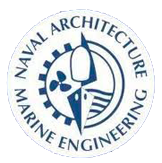Grid Connection
Cable Arrangement
Inter-array cables
Both the PSP Platform and the wind turbine generator (WTG) units are floating. Therefore, dynamic cables are required in order to keep the mechanical stresses induced on them within safe operating limits. The critical point is the dynamic section of the cable because of the loads on the cables imparted by the motion in the turbine and floating foundation. The installation of these particular cables must be done by a specific cable laying vessel.
Figure 1. Inter-array cables [1]
The inter-array cables transport the electricity coming from the floating wind turbines towards the offshore substation at 33 kV AC in 3 phases. The insulation is solid-dielectric and the cables are moored at specific points.
The primary challenge considering the installation process is found in the installation of the inter-array cables mainly because they may require anchoring at some locations, which can be challenging and increases the time that cable laying vessels remain on charter.
Wind turbines transformers transform 600-700 V to 33 kV. It is not possible to install better transformers to achieve higher voltages from the turbines as this would result in unacceptable nacelle size increases. Then, from every wind turbine, an inter-array cable connects the wind turbine to the offshore substation.
Export Cable
The export cable would be routed to Dounreay, where it would connect to the local distribution network at Dounreay Substation operated by SSE, which is scheduled to be upgraded from 132 kV to 275 kV in the near future [2].
The first decision for a project such as this is which technology to use to export the electricity – Alternating Current (AC) or Direct Current (DC).
Figure 2 shows that AC losses increase more than the DC losses with distance. Hence, it is strongly advisable to use High-Voltage DC (HVDC) in the current project considering the distance from shore is 75 km. The capacity of HVAC cables decrease with distance mainly because of its capacitive and inductive characteristics. These losses can be avoided by utilising DC transmission, which, while more costly to procure and install, result in a lower cost of electricity [3].
Figure 2 . AC / DC Transmission [4]
The export cable is likely to be buried, and it transmit electricity in 132 kV DC as this is the current limit for flexible DC cables. The different parts of the cable are demonstrated in Figure 3.
Figure 3. Export Cable Core [5]
There are few suppliers of flexible DC cables, but they are offered by industry leaders such as ABB and Siemens. It seems likely there is going to be a significant increase in this kind of technology in the market as the trend in near future will be to go further from shore implying the use of floating systems.
Furthermore places such as the United States and Europe are aiming to develop connections among their networks, therefore, large distances are to be covered, forcing the use of DC to prevent losses, for efficiency and economic reasons [6].
Offshore Substation
Offshore substations (Figure 4) are usually installed on jacket foundations, but it would be very costly in the current project because of the high depth. So as an alternative, it is implemented on top of the platform, aiming to reduce costs as the platform is to be used for multiple purposes.
Figure 4 . Offshore Substation [7]
The offshore substation is needed for efficiency and economic reasons to collect the power produced by the array of converters and transform it before transmitting it to shore. The offshore substation transform the electricity obtained from the energy converters in 33 KV AC to 132 KV DC to be carried to shore. An overview of the connection can be seen in Figure 5.
Figure 5. Grid Connection [8]
One important factor to take into consideration is the fact that offshore substations are specifically designed for each project as the characteristics of each offshore project is different from others, so in our case, a specific offshore substation must be designed.
Taking into account the offshore substation would be located on top of the platform, which is proven to be stable, the maintenance would be relatively easy to do. Besides, the accommodation house and the maintenance facilities are situated on the very same platform, next to the substation.
Taking into account all the requirements of the offshore substation, the best option that the market offers is the one provided by ABB, which characteristics are the following:
Go to Design Feasibility and Why PSP?
References
[1] Anderson, J. (2016) World’s first floating wind farm to be built off Scottish coast. [Online]. 2016. Gizmag.com. Available from: http://www.gizmag.com/worlds-first-floating-wind-farm/40383/ [Accessed: 7 May 2016]
[2] Distribution, S. (2016) Dounreay Beauly. [Online]. 2016. Ssepd.co.uk. Available from: https://www.ssepd.co.uk/DounreayBeauly/ [Accessed: 10 May 2016].
[3] J. Green, Electrical collection and transmission systems for offshore wind power. Golden, CO: National Renewable Energy Laboratory, 2007.
[4] "HVDC Benefits - Siemens", Energy.siemens.com, 2016. [Online]. Available: http://www.energy.siemens.com/br/en/power-transmission/hvdc/applications-benefits/hvdc-benefits.htm#content=Economic%20Aspects. [Accessed: 06- Apr- 2016].
[5] "Wire and Tube News", Wireandtubenews.com, 2016. [Online]. Available: http://www.wireandtubenews.com/2013/10/15/world-first-the-successful-connection-of-the-floating-wind-turbine-equipment-and-the-substation-with-the-floating-submarine-cable/. [Accessed: 06- Apr- 2016].
[6] Offshore Wind IEEE Boston PES -November 16, 2010, 1st ed. Mott Macdonald, 2010
[7] Valhall | References - HVDC | ABB. [Online]. 2016. New.abb.com. Available from: http://new.abb.com/systems/hvdc/references/valhall [Accessed: 7 May 2016].
[8] ABB technology powers North Sea platform from land. [Online]. 2016. Abb.com.http://www.abb.com/cawp/seitp202/2759794660e65951c12570910023d726.aspx [Accessed: 7 May 2016].
[9] HVDC Light technology - HVDC | ABB. [Online]. 2016. New.abb.com. Available from: http://new.abb.com/systems/hvdc/hvdc-light [Accessed: 7 May 2016].

